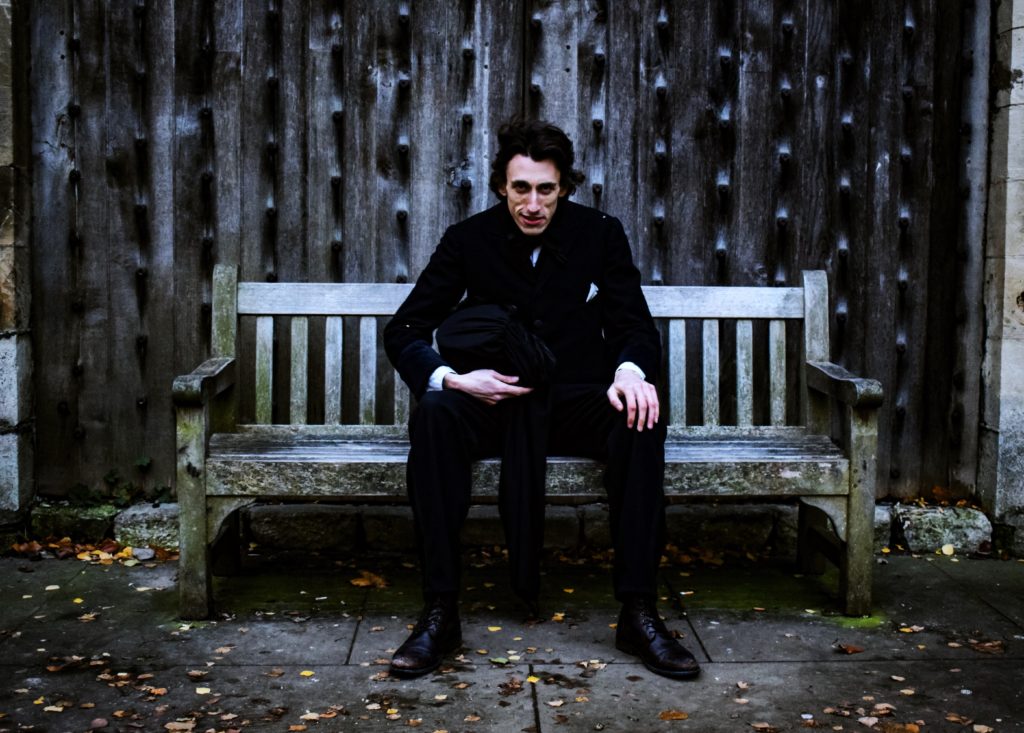
York ghost storyteller James Swanton: Returning to York Medical Society for a second season of The Signal-Man performances. Picture: Jtu Photography
AFTER a sell-out run last Halloween, gothic York actor James Swanton is reviving his solo production of Charles Dickens’s The Signal-Man from October 16 to 28.
A familiar face from Inside No. 9 and The First Omen, he will give ten performances of his solo show at York Medical Society, Stonegate, York, before transferring to the Charles Dickens Museum in London.
Each performance will incorporate a second Dickens’s ghost story, The Trial For Murder, and the show will run as a partner event with the York Ghost Merchants, in Shambles, whose annual Ghost Week celebrations will take over the city from October 25 to November 2.
“Last year, I was shocked when every performance of The Signal-Man sold out more than a month in advance,” says James. “I think that had a lot to do with the wild popularity of the York Ghost Merchants! I’ve therefore scheduled twice as many performances this Halloween.”
All but one performance – October 21 – has sold out already, matching the popularity of his annual performances of Dickens’s Christmas ghost stories, A Christmas Carol, The Haunted Man and The Chimes since 2018.
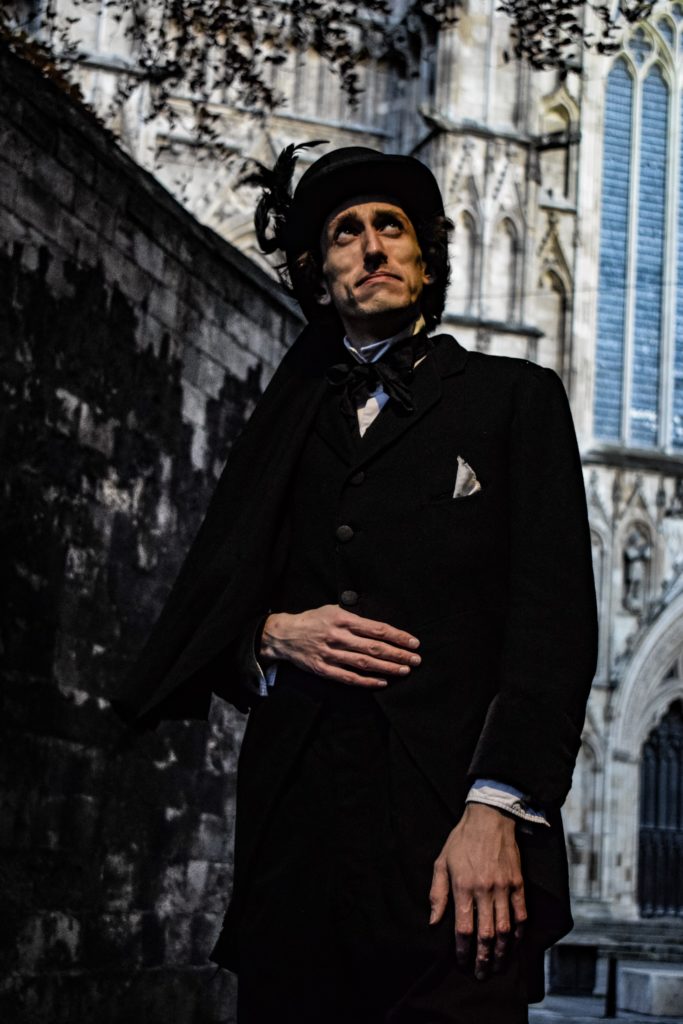
“The Signal-Man ranks among the most famous ghost stories of all time – subtle and mysterious, but gradually building to a devastating conclusion,” says James Swanton
Here James discusses Dickens’s storytelling prowess with CharlesHutchPress
If at first you succeed, do The Signal-Man again, but what might differ from last Halloween?
“This year, I’m relieved to have had first-hand experience of the show actually working in performance! That should make everything more collected and confident, though I hope without losing the quiet mesmeric charge. It’s a strikingly different energy to most Dickens, which is where the M. R. James comparisons come in.”
What makes York Medical Society such an ideal setting?
“I enjoy a black-box theatre space, but it’s difficult to beat the immersive feel of antique wood panelling, latticed windows and an open fireplace. The room in which I’m performing puts me in mind of the tavern in Barnaby Rudge. Perfect for relating ghostly tales!”
What form does the partnership with York Ghost Merchants take?
“It’s mainly about connection and community; the Ghost Merchants are always giving back to York. Those who are in the city for Ghost Week may stumble on my storytelling thanks to the Merchants – and in turn, my shows may tip them off to things going on elsewhere.
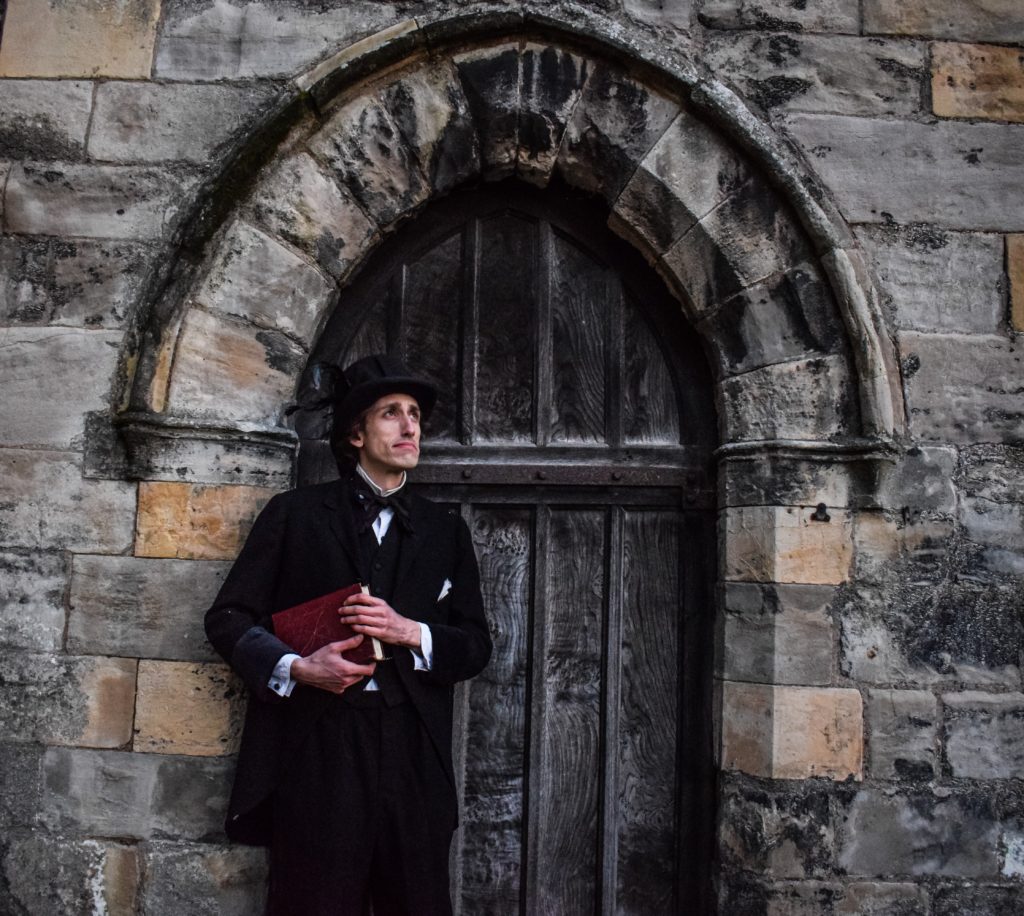
“I feel this is one story that works far better when spoken out loud than read in private,” says James Swanton of The Signal-Man
“We’ve been collaborating since early 2020 – pre-pandemic! – when I gave a rendition of M. R. James’s Canon Alberic’s Scrap-Book at their Shambles premises. Each ticket included a tie-in yellow-eyed ghost, patterned after the demon in the story. Highly collectable now, I’d imagine.”
How does The Signal-Man differ from Dickens‘s Christmas ghost stories?
“It’s a rather darker show, ranking among the most famous ghost stories of all time – subtle and mysterious, but gradually building to a devastating conclusion.
“I’ve now performed it everywhere from Gad’s Hill – the country house at which Dickens died in 1870 – to a Category C prison. Everywhere it holds audiences riveted. I first gave The Signal-Man with the York Ghost Merchants as one of their online streams during the pandemic, so it’s fitting to be collaborating with them again.”
Without giving away the ending, what happens in The Signal-Man and why does it suit live performance?
“In short form, a wandering gentleman befriends a lonely signal-man on an isolated stretch of railway. He there hears about the signal-man’s uncanny supernatural experiences.
“I feel this is one story that works far better when spoken out loud than read in private. Simon Callow agreed with me after he recorded it as an audio drama.
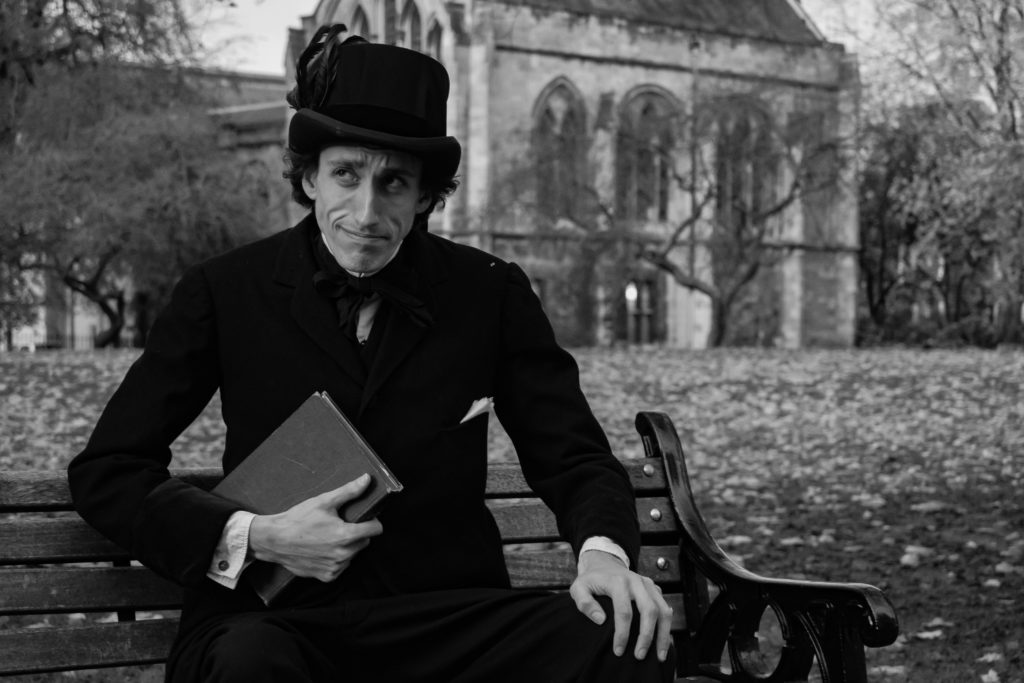
“Dickens is essentially the character actor’s Shakespeare,” says James
“Even so, I’d recommend that people familiarise themselves with the text in advance. The final revelation takes some digesting, not unlike the ending of Nicolas Roeg’s Don’t Look Now. But once the core idea sinks in, it’s forever burned into the memory.”
Likewise, what happens in The Trial For Murder and why does it suit live performance?
“A city gentleman does jury service at the Old Bailey and begins to catch sight of an unsettling figure whose face is ‘the colour of impure wax’. People don’t generally know this story – it also goes by the unhelpful title ‘To Be Taken With A Grain Of Salt’ – so there’s a vital element of surprise.
“After all, a courtroom is itself a type of theatre, and this narrative’s structure is deliberate, verging on procedural, which contrasts well with the shocks.
“The Trial For Murder is less well known [than The Signal-Man] – and in my opinion, something of a neglected classic. Like The Signal-Man, it feels imbued with the spirit of M. R. James. So many of Dickens’s ghosts are family-friendly – just think of A Christmas Carol and how well it lends itself to the Muppets! None of that with these tales. Keep your children away.”
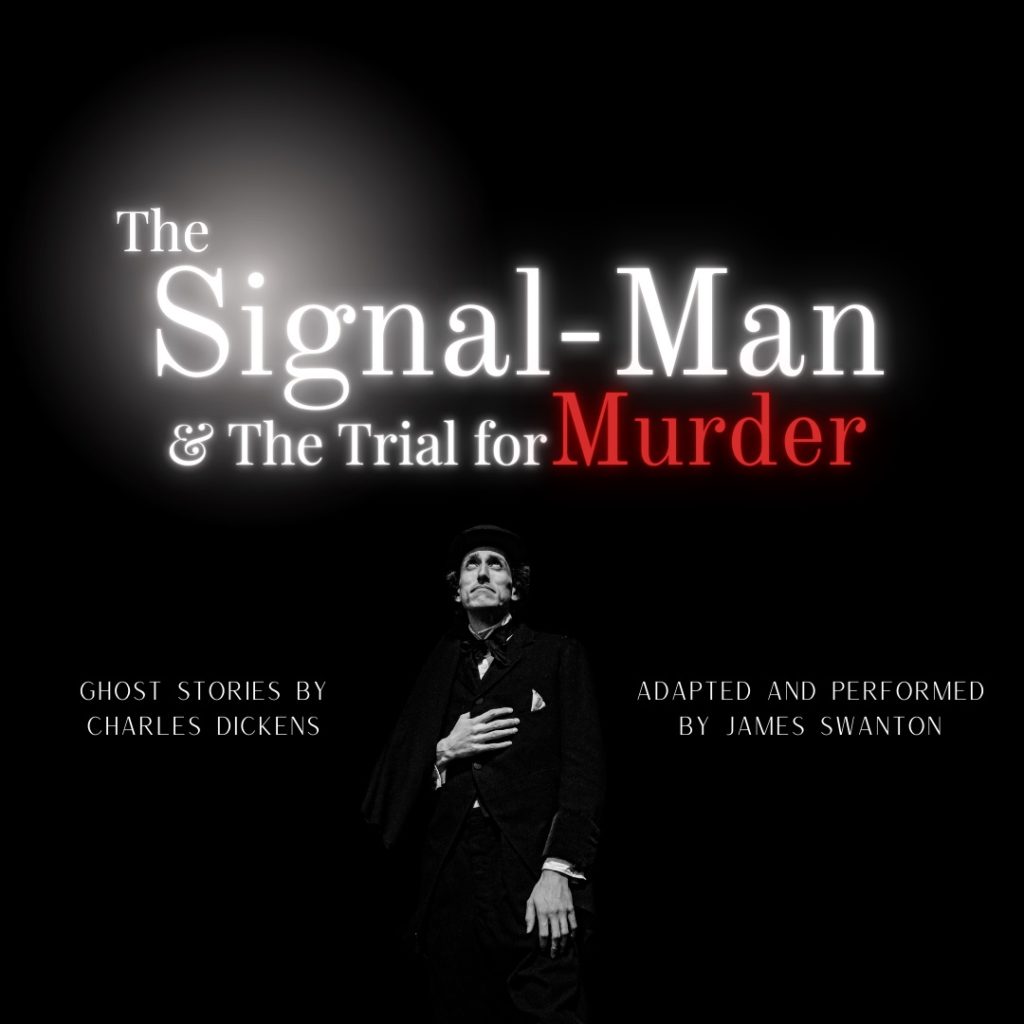
The poster for James Swanton’s double bill of ghost stories for Halloween at York Medical Society
How come you performed The Signal-Man at a Category C prison?
“This came about after an approach from A. G. Smith, who’s highly regarded as a ghostly storyteller through his touring work with Weeping Bank. The prison offered that rare thing: an audience who not only wanted but needed to be told a story.
“They were among the best I’ve ever had; certainly the most attentive. I’m sure they understood the signal-man’s feelings of entrapment in ways I can’t begin to imagine.”
What keeps drawing you back to Dickens?
“His invented people are irresistible; Dickens is essentially the character actor’s Shakespeare. That said, his narration interests me more and more with the passage of time. And there’s rather a lot of that in these two pieces! The eye-catching grotesques melt away and the storyteller takes centre stage.”
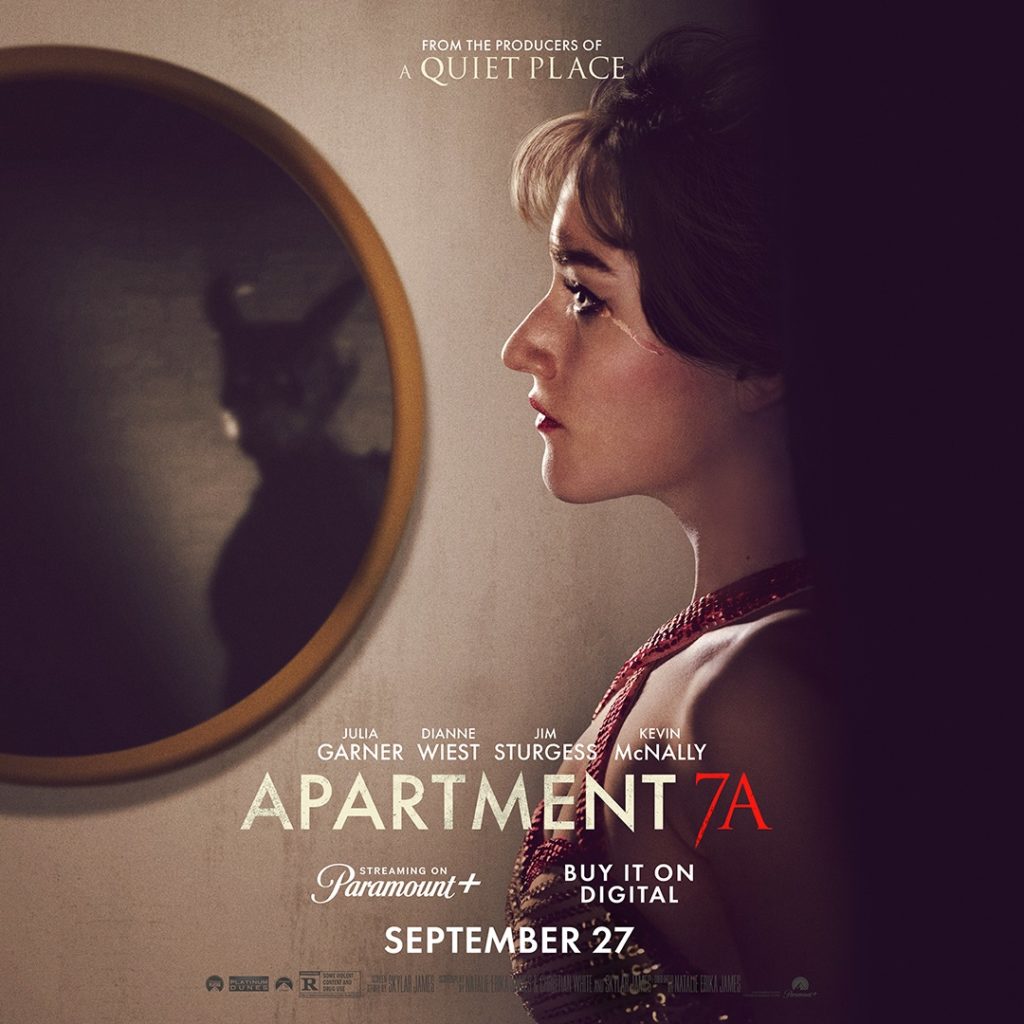
James Swanton (in the mirror) and Julia Garner in the film poster for Apartment 7A
What else is coming up for you? Any filming commitments?
“There’s the odd project in the offing, though nothing nailed down. I’ve been continuing my association with Hammer Films this month. They put me back into Christopher Lee’s Creature make-up for last week’s premiere of their restored Curse Of Frankenstein, where I was honoured to shake hands with 90-year-old cast member Melvyn Hayes. Young Frankenstein himself!
“I’ll also be guesting at Manchester’s Festival of Fantastic Films closer to Halloween. But most of the year is now blocked out with stage work, including my return to York Medical Society in the last week of November with A Christmas Carol and The Haunted Man. Tickets are now on sale.”
And finally, James, why should audiences see The Signal-Man?
“Come to The Signal-Man if you want to experience old-fashioned theatrical storytelling in the pricelessly atmospheric setting of York Medical Society. Roger Clarke, esteemed author of A Natural History Of Ghosts, has been good enough to call me ‘the best interpreter of Charles Dickens’s ghost stories alive’. I’ll be doing my chilling best to live up to that praise.”
James Swanton presents The Signal-Man, York Medical Society, Stonegate, York, October 16 to 28, 7pm, except October 27 and 28 at 5.30pm and 7.30pm. Tickets are on sale too for Charles Dickens’s Ghost Stories, The Haunted Man, November 24 and 27, 7pm; A Christmas Carol, November 25 and 28, 7pm; November 30, 2pm and 6pm. Box office: 01904 623568 or yorktheatreroyal.co.uk.
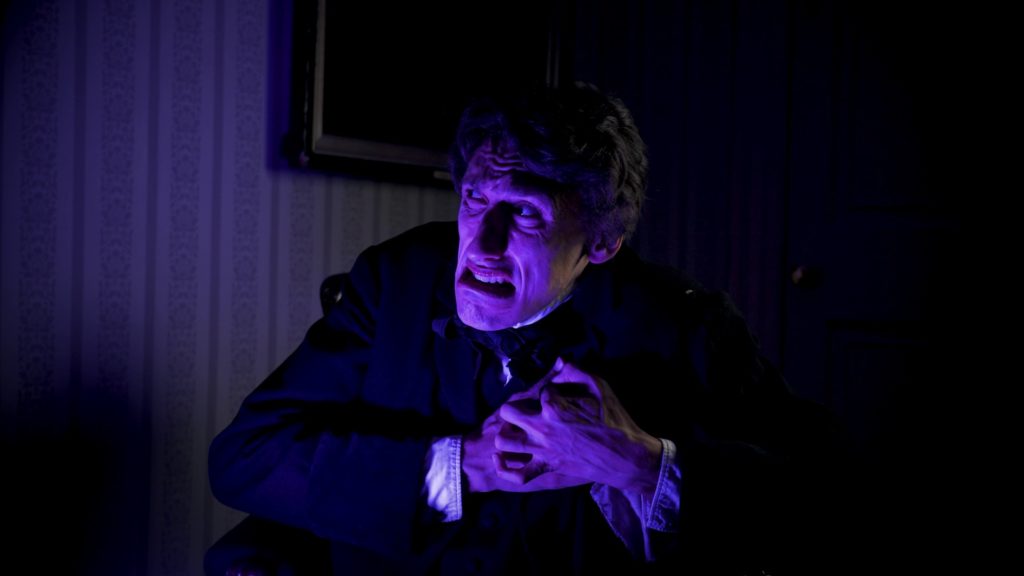
James Swanton in ghost story-telling mode at York Medical Society
James Swanton on York’s history of trains and ghosts and Dickens’s railway links
“YORK is as much a city of trains as ghosts. The National Railway Museum is celebrating its 50th anniversary with the opening of its refurbished Station Hall.
“It’s also been an interesting year for Dickens’s links with the railways. 2025 marks 160 years since the Staplehurst accident – a horrifying train crash from which Dickens was lucky to escape with his life.
“It’s this trauma that inspired him to write The Signal-Man, which might also be considered the last story that Dickens completed. All that followed were collaborative works and an unfinished novel.
“Incredibly, Dickens died on the fifth anniversary of the Staplehurst crash. Given that The Signal-Man is so much about our inability to escape our fates, that feels eerily significant.
“I was pleased when the Charles Dickens Museum commissioned me to create a show based on the incident in June. We gave it a sensational title: Killing Dickens!”
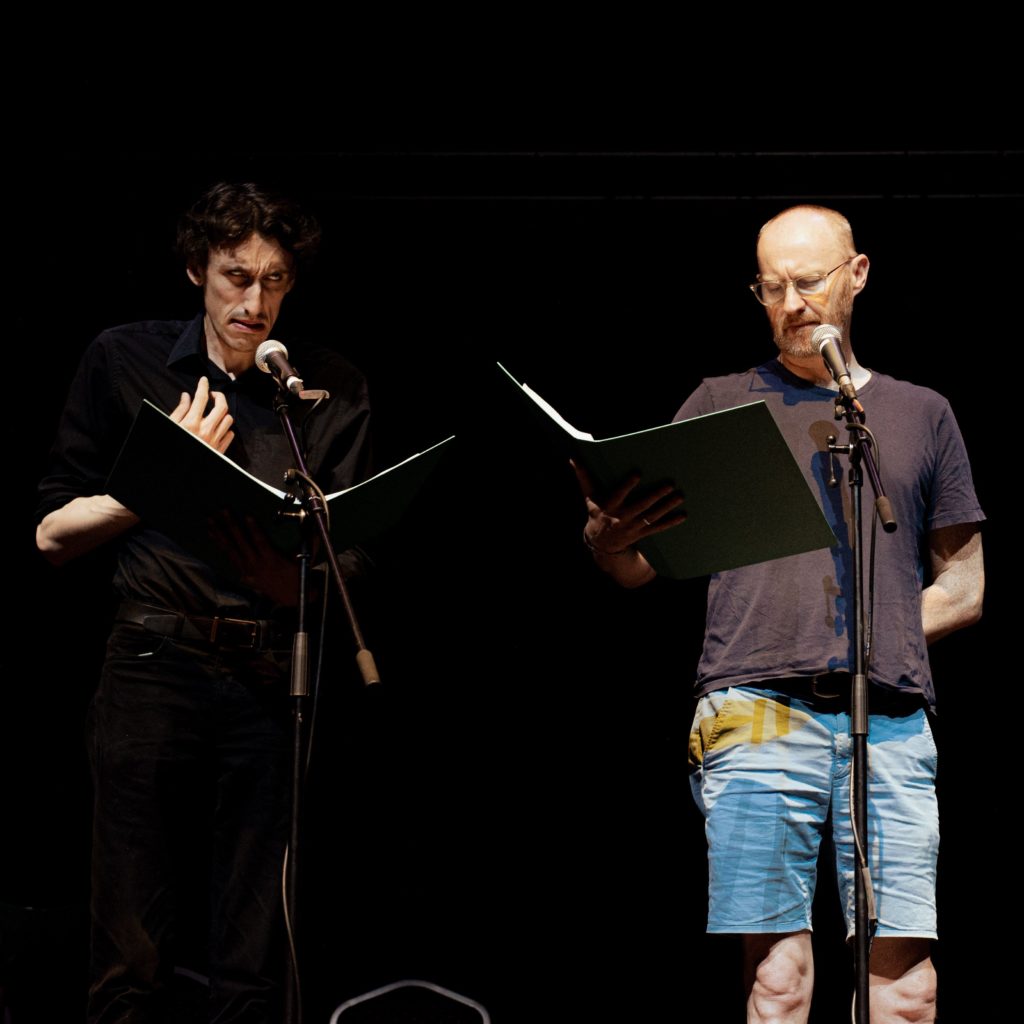
James Swanton working with Mark Gatiss. Picture: Sonchia Lopez
Did you know?
JAMES Swanton often appears on film as all manner of demons and monsters. Last year, he was seen in Apartment 7A, Tarot, The First Omen and the final series of Inside No. 9.
He also has a keen interest in the history of screen horror. “Many people first encounter The Signal-Man through the 1976 Ghost Story For Christmas starring Denholm Elliott,” he says.
“In 2023, I became a part of the BBC’s modern Ghost Stories For Christmas tradition – playing the Mummy in Mark Gatiss’s Lot No. 249, chasing poor Kit Harington down those country roads at night – so I’d like to think I’m well placed to present such terrors on stage.
“Recently, I was reunited with Lot No. 249’s make-up man, the Oscar- winning Dave Elsey, to re-create Christopher Lee’s Creature from The Curse Of Frankenstein, in aid of a documentary on the new Blu-ray release. At last, I can say I’ve been employed by Hammer Films!
“I’d stop short of saying I’m now Christopher Lee’s representative on Earth, but it was certainly a singular honour.”
